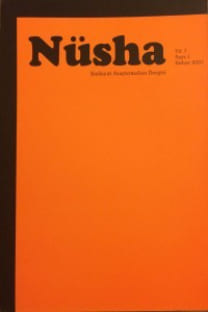Amerika Birleşik Devletlerinde Arapça öğretimi ve öğrenimi: Gerçekler, ihtiyaçlar ve geleceğe dair tavsiyeler
The teaching and learning of Arabic in The United States: Realities, needs, and future directions
___
- Abboud, P. (1995). The teaching of Arabic in the United States: Whence and whither? Editör: M. Al-Batal, The teaching of Arabic as a foreign language: Directions and issues (ss. 35-78). Provo, UT: American Association of Teachers of Arabic.
- Betteridge, A. H. (2003). A case study in higher education international and foreign area needs: Changes in the Middle East Studies Association membership from 1990 to 2002. http://www.jhfc.duke.edu/ducis/globalchallenges/research_papers.html adresinden alınmıştır.
- Belnap, R. K. (1995). The institutional setting of Arabic language teaching: A survey of program coordinators and teachers of Arabic in U.S. institutions of higher learning. Editör: M. Al-Batal, The teaching of Arabic as a foreign language: Directions and issues (pp. 35-78). Provo, UT: American Association of Teachers of Arabic.
- Brown, H. D. (2001). Teaching by principles: An interactive approach to language pedagogy. New York: Longman.
- Brustad, K. (2000). The syntax of spoken Arabic: A comparative study of Moroccan, Egyptian, Syrian, and Kuwaiti dialects. Washington, DC: Georgetown University Press.
- Kuntz, P., & Belnap, R. K. (2001). Beliefs about language learning held by teachers and their students at two Arabic programs abroad. Al-'Arabiyya, 34, 91-113.
- Open Doors. (2004). Study abroad surging among American students. http://opendoors.iienetwork.org/?p=50138 adresinden alınmıştır.
- Patrikis, P. A. (1996). The foreign language problem: The governance of foreign language teaching and learning. Editör: C. Krarnsch, Redefining the boundaries of foreign language study (ss. 293--333). Boston: Heinle and Heinle.
- Rivers, W. (1992). The program director or coordinator, the LTCS, and the training of college language instructors. Editör: W. Rivers, Teaching languages in college: Curriculum and content (ss. 295-312). Lincolnwood, IL: National Textbook Company.
- Welles, E. B. (2004). Foreign language enrollments in United States institutions of higher education, Güz 2002. ADFL Bulletin, 35(2-3), 7-26.
- Younes, M. A. (1990). An integrated approach to teaching Arabic as a foreign language. Al- Arabiyya, 23, 105-122.
- ISSN: 1303-0752
- Yayın Aralığı: 2
- Başlangıç: 2001
- Yayıncı: Oku A.Ş.
R. Kirk BELNAP, Mahmoud al- BATAL
Ürdün'de roman edebî türünün tarihi gelişimi
İbn Haldûn'a göre Arap dili ve eğitimi
Arap şiirinin önde gelen iki şairi; El-Ma arrî ve El-Mutenebbî'nin mukâyesesi
Çağdaş İran edebiyatında Meliku'ş-Şu arâ Muhammed Takî Bahâr'ın önemi
Türklere yönelik Arapça öğretiminde metot geliştirme üzerine bir deneme
